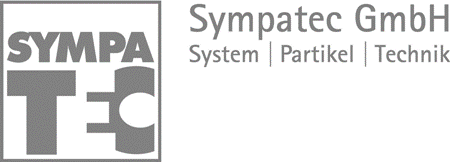There are around 40 known varieties of coffee beans across the world, and these exist in a range of different blends and degrees of roasting; two factors which determine taste, aroma and the brewing behavior of this well-known and popular drink.
However, another key and often overlooked factor in coffee preparation is the grinding degree of the coffee powder itself – this, alongside the selection of the green coffee, the roast and the blend, is an essential element to achieving the best coffee possible.
For example, if you were preparing a Turkish coffee or an espresso, then an extremely fine grind would be required, likely with grain sizes smaller than 1 mm. For more common drip brewed and filtered coffee this particle size would be below 1.5 mm whereas for French press, American brewed or Scandinavian coffee this would be just below 3 mm in size.
With the advent of capsule technology, the coffee industry is continually introducing new and varying types of coffee into the market to stimulate coffee consumption. This, however, increases the need for strict quality control, especially with regards to the effective size distribution of the coffee powder.
A separate but somewhat interlinked challenge is the increasing internationalization of coffee producers themselves. This means that comparability of analyses at different locations is a key concern. Industrial scale coffee grinding and regular changes in variety mean that partially automated and consistent control of the particle size distribution is needed to make sure that the product maintains a consistent quality.
Reproducible and High-Resolution Measurement Results
.png)
High-resolution and reproducible particle size distributions of ground coffee | Average particle size for espresso at x50 = 212 µm and filter coffee at x50 = 342 µm
Alongside traditional screening methods, laser diffraction is the most common technique for ascertaining the particle size distribution in coffee processing. When used in combination with RODOS dry dispersing, laser diffraction shows key advantages in fast, accurate grain size analysis with HELOS in the laboratory as with MYTOS in the process.
RODOS dispersion offers particularly high sample throughput, making it possible to measure larger sample quantities of up to 100 g and allowing this technique to offer not only high statistical significance but also unmatched repeatability and comparability of results; even when used across different production sites. RODOS’ fast measuring cycle and automatic cleaning of the measuring area means that up to 60 measurements can be undertaken in an hour.
Comparable Measurement Results in the Laboratory and Process
.png)
Grain size distribution of 3 different types of coffee with varying degrees of grinding | Good comparability between the laboratory measurements with HELOS and the measurements in the process with MYTOS | Deviations in sampling substantiated
As well as particle size analysis, the analysis of the shape of particles also plays an important role, especially in the product development of coffee and for the development of grinding machines and coffee grinders. In order to accomplish this efficiently, dynamic image analysis used with QICPIC and dry disperser RODOS can be used to record approximately 1 million particles within a minute. This is not only quick and efficient, but it also provides an impressive level of statistical reliability in the measurement results.
Powerful evaluation modes are available for both shape and size alongside a range of definable selection and filter criteria to support the identification of specific fractions within a sample. As well as these quantitative measurements and evaluations being represented in distribution diagrams, a particle gallery and particle video recording is also used for more qualitative analyses.
Single Particle Detection with Image Analysis
.png)
Grain size distribution of a coffee sample for identifying different fractions
Better Particles with Best Instruments
Laser diffraction and additional image analysis systems such as those offered by Sympatec can cover the complete range of particle size and shape characterization within coffee. As pioneers in the field of dry particle measurement technology, they are a well respected and established presence on the international coffee market and offer a diverse range of product-adapted and process-oriented installations.
Additionally, Sympatec are market leaders in laboratory applications used for product development and off-line quality control as well as installations in laboratories that use automated, in-line sample feeding and real time measurement of particle size distribution within the on-line grinding process. All these systems and options have been specifically developed and designed to ensure the best product qualities via timely and appropriate intervention in the production process.
The use of dry measurement allows high sample throughputs with a minimum of sample preparation and effort. It also ensures that little cleaning overheads are incurred and, if required, for samples to be recovered.
As measurement methods are developed for specific qualities, these can be transferred easily to other systems as a standard operating procedure (SOP). Overall and perhaps most importantly, because consistently high product qualities can be controlled with precision and ease, this justifies consumer confidence in the quality of coffee products.
Alongside reliable and robust instrument design, it is vital that systems are maintained professionally by qualified service teams in order to ensure the quality and reliability of these measuring systems. Having the appropriate expertise on hand is just as important for large, international coffee producers as it is for smaller or medium-sized producers of local or regional speciality coffees.

This information has been sourced, reviewed and adapted from materials provided by Sympatec GmbH.
For more information on this source, please visit Sympatec GmbH.